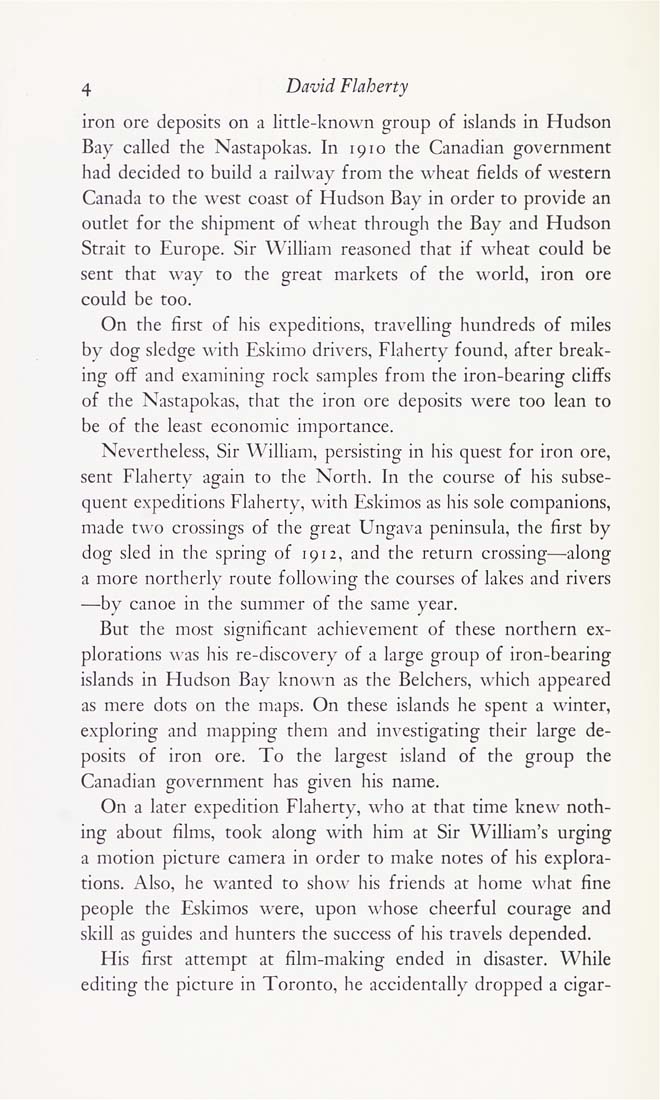Columbia Library columns (v.15(1965Nov-1966May))
(New York : Friends of the Columbia Libraries. )
|
||
|
|
|
|
| v.15,no.2(1966:Feb): Page 4 |

4 David Flaherty iron ore deposits on a little-known group of islands in Hudson Bay called the Nastapokas. In 1910 the Canadian government had decided to build a railway from the wheat fields of western Canada to the west coast of Hudson Bay in order to provide an outlet for the shipment of «-heat through the Bay and Hudson Strait to Europe. Sir ^^'illiam reasoned that if wheat could be sent that way to the great markets of the world, iron ore could be too. On the first of his expeditions, travelling hundreds of miles by dog sledge \\ith Eskimo drivers, Flaherty found, after break¬ ing off and examining rock samples from the iron-bearing cliffs of the Nastapokas, that the iron ore deposits were too lean to be of the least economic importance. Nevertheless, Sir William, persisting in his quest for iron ore, sent Flaherty again to the North. In the course of his subse¬ quent expeditions Flaherty, with Eskimos as his sole companions, made two crossings of the great Ungava peninsula, the first by dog sled in the spring of 1912, and the return crossing—along a more northerly route follo\\'ing the courses of lakes and rivers —by canoe in the summer of the same year. But the mo,st significant achievement of these northern ex¬ plorations was his re-discovery of a large group of iron-bearing islands in Hudson Bay know n as the Belchers, which appeared as mere dots on the maps. On these islands he spent a winter, exploring and mapping them and in^-estigating their large de¬ posits of iron ore. To the largest island of the group the Canadian government has given his name. On a later expedition Flaherty, who at that time knew noth¬ ing about films, took along with him at Sir William's urging a motion picture camera in order to make notes of his explora¬ tions. Also, he wanted to show his friends at home what fine people the Eskimos were, upon «hose cheerful courage and skill as guides and hunters the success of his travels depended. His first attempt at film-making ended in disaster. While editing the picture in Toronto, he accidentally dropped a cigar- |
| v.15,no.2(1966:Feb): Page 4 |







